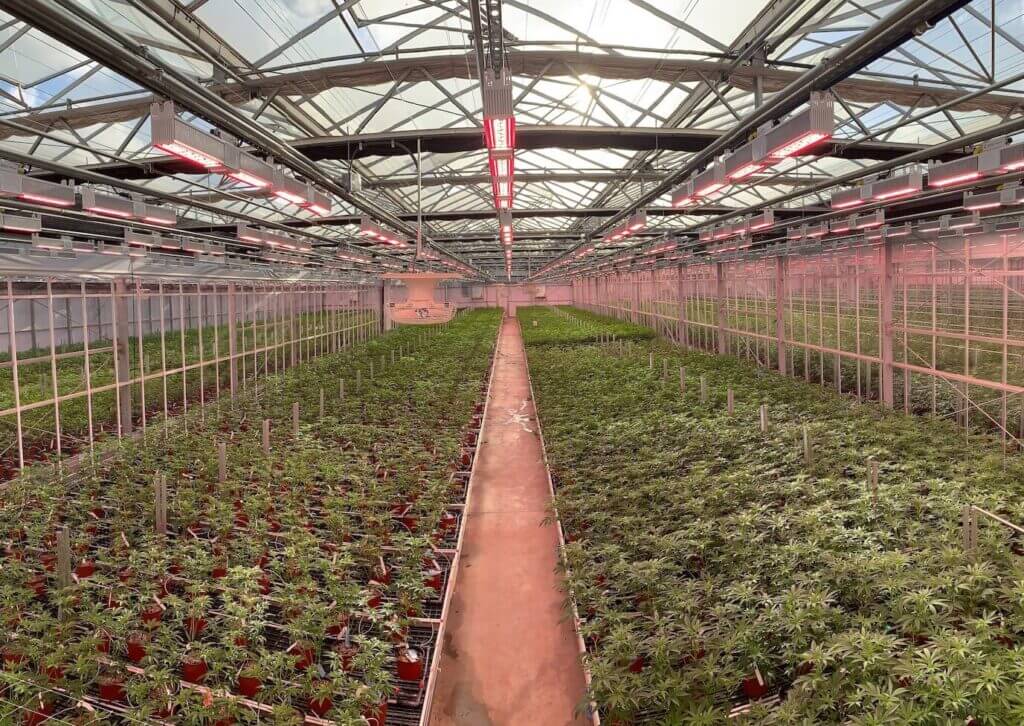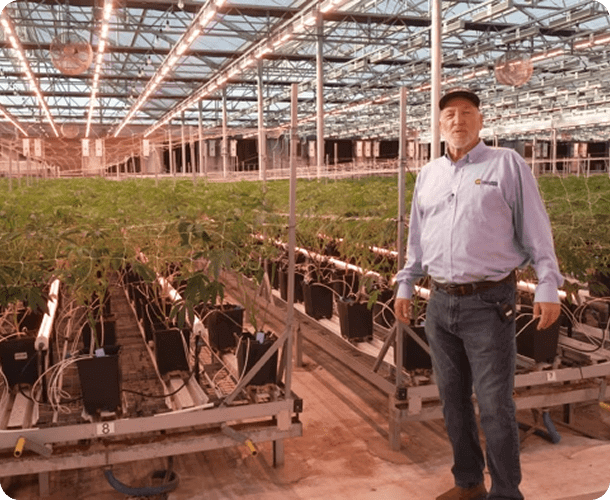
Can I use my LED grow light for Red Light Therapy?
If you’re not familiar with red light therapy, let’s get you up to speed. Here’s a quick overview from Google
2025 California Greenhouse Rebate Program

If you’re choosing to grow your plants in a greenhouse, you already know how valuable natural sunlight is for your crop. After all, plant life has developed a complex system of biological processes around the signals of the sun. And if you’ve chosen to take advantage of the sun’s specific light spectrum, it makes sense that you would want to choose variable-spectrum greenhouse LED lights to supplement those natural rays. While HID and fluorescent lights are only going to blast your plants with a limited spectrum, LED grow lights help you mimic the wavelengths of the sun . . . especially if you choose a variable spectrum fixture. That way, your supplemental lighting works with the sun.
But while the variable-spectrum nature of LED lights is one of the more obvious benefits, there are several advantages of LED grow lights for supplemental greenhouse lighting. As you weigh your supplemental lighting options, here are the five most powerful points to put in the “pros” column for LEDs.
We don’t need to tell you that the faster you usher your plants through their grow cycle, the greater your overall yields and potential profits. If you depend strictly on natural sunlight for cultivation, you’re bound by the slow progression of the seasons. If you supplement with HID lights, you may be able to manipulate your plants somewhat by switching out MD bulbs for the redder glow of HPS lights. But the nuance and variability of a high quality, adjustable LED grow light allows you to create the most true-to-nature seasonal progression possible. You can increase the yield of indoor grows quickly than the sun and more naturally than HID bulbs.
LED grow lights also allow you to fit more grow cycles into a year. Even if you live in a darker climate or it’s the dead of winter, the intensity and comprehensive spectrum of LED grow lights allow you to create any season under the greenhouse roof.
Light spectrum is not the only benefit to growing in a greenhouse. Sunrise/sunset setting is so important for indoor cultivation. When night falls, your crop switches from photosynthesis mode into metabolism. Much like humans, plants use the night hours for growth, putting the energy they created during the day towards things like root development and budding. The gradual glow of sunrise and the waning light of sunset give your crop a heads-up that it’s time to start transitioning from one process to another.
Now, if you use HID grow lights to supplement sunlight, you get to make the days as long as you need them to be in order for your plants to flourish. This is, after all, one of the main reasons greenhouse growers choose to install supplemental lighting in the first place. However, HID lights typically have two settings: on or off. This means that if you’re extending the day beyond sunset hours, your plants lose the opportunity to transition gently from one process into the other. Instead, they’re plunged into darkness, and this can shock their system and hinder growth.
More advanced LED lights come equipped with a sunrise/sunset option allowing you to start and end “daylight” hours whenever you want while still providing your crop with those supportive transitions.
Like the sunrise/sunset feature, this benefit does not apply to all LED grow lights, but it does apply only to LED grow lights.
You will not find variability in HID bulbs. Generally speaking, an HID grow light setup requires you to use MH bulbs for vegetation, then trade that blue-spectrum lamp out for an HPS light that’s heavier on red for flowering. It works, yes. But variable spectrum LED grow lights work far better. These lights allow you to program the exact balance of color that’s best for your specific species of plant at each moment in their grow cycle.
To make things even easier on you, technologically advanced grow lights like the California LightWorks GH Pro 340 feature photo sensors for automatic light balancing. Translation: the grow light adjusts to truly supplement the available sunlight in any given moment. You don’t have to worry about overwhelming your plants or wasting energy on excess light. On brighter days, the lights dim. Between this feature and the variable spectrum control, you can ensure your crop gets only what it needs and exactly what it needs.
It’s no secret that lighting makes up a huge percentage of any grower’s energy costs. LED grow lights help reduce those expenses save energy consumptions in number of ways.
First, LED lights are famously more efficient than HID and fluorescent bulbs. The industry-leading brands like California LightWorks offer an efficiency of up to 3.0 micromoles per joule while HID lights have an efficiency of less than 1.9 micromoles per joule. And because variable spectrum LED lights allow cultivators to specify the exact intensity needed per color, you don’t waste energy on wavelengths your plants can’t use.
The use of LED grow lights also allows growers to save on supplemental cooling. These lights emit far less heat than any of the other lighting options, and models like the GH Pro 340 feature passive cooling. Cooler lights also mean less evaporation, which means water goes further in your greenhouse operation.
Finally, as an added bonus, most regions of the United States offer a rebate for greenhouses that switch to supplemental LED lighting, significantly offsetting the cost of the lights before you even calculate energy savings over time.
It takes a lot to keep up a greenhouse. No matter how expansive your operation is, your plants undoubtedly keep you busy enough as it is. So, it’s no small benefit to be able to install your lights and not have to even think about replacing them for 10-15 years.
This is the case with LED grow lights. The highest quality lights have a lifetime rating of over 50,000 hours. For comparison, a good HID bulb lasts at the most, 24,000 hours, and even then, the decline in light quality is significant in as little as 5,000 hours and the bulbs must be changed.
These benefits only scratch the surface of what LED grow lights can accomplish for greenhouse cultivation. But we’re betting they’re enough to inspire you to dig deeper.
So, where do you go from here?
We suggest starting with a closer look at the California LightWorks GH Pro 340. This is a top-tier supplemental LED grow light made specifically for greenhouse applications. Even if you ultimately decide to use a different product for your operation, this video gives you a clear sense of what features are out there and what they could mean for your costs and yields.
You might also be interested in seeing how one of the oldest and most respected cannabis companies uses LED lighting for their greenhouse operation. Read case study of Harborside Farms.
And of course, as you dive deep into LED grow light research, please do not hesitate to reach out to us here at California LightWorks. We know how important the process of selecting a lighting system is, and we’re happy to support you in any way we can. No question is too basic or too complicated.
Chief Executive Officer

If you’re not familiar with red light therapy, let’s get you up to speed. Here’s a quick overview from Google
Made in California Since 2008.
Proudly made in California, California LightWorks engineers high-performance LED grow lights that deliver next-generation results for commercial and home growers alike.
